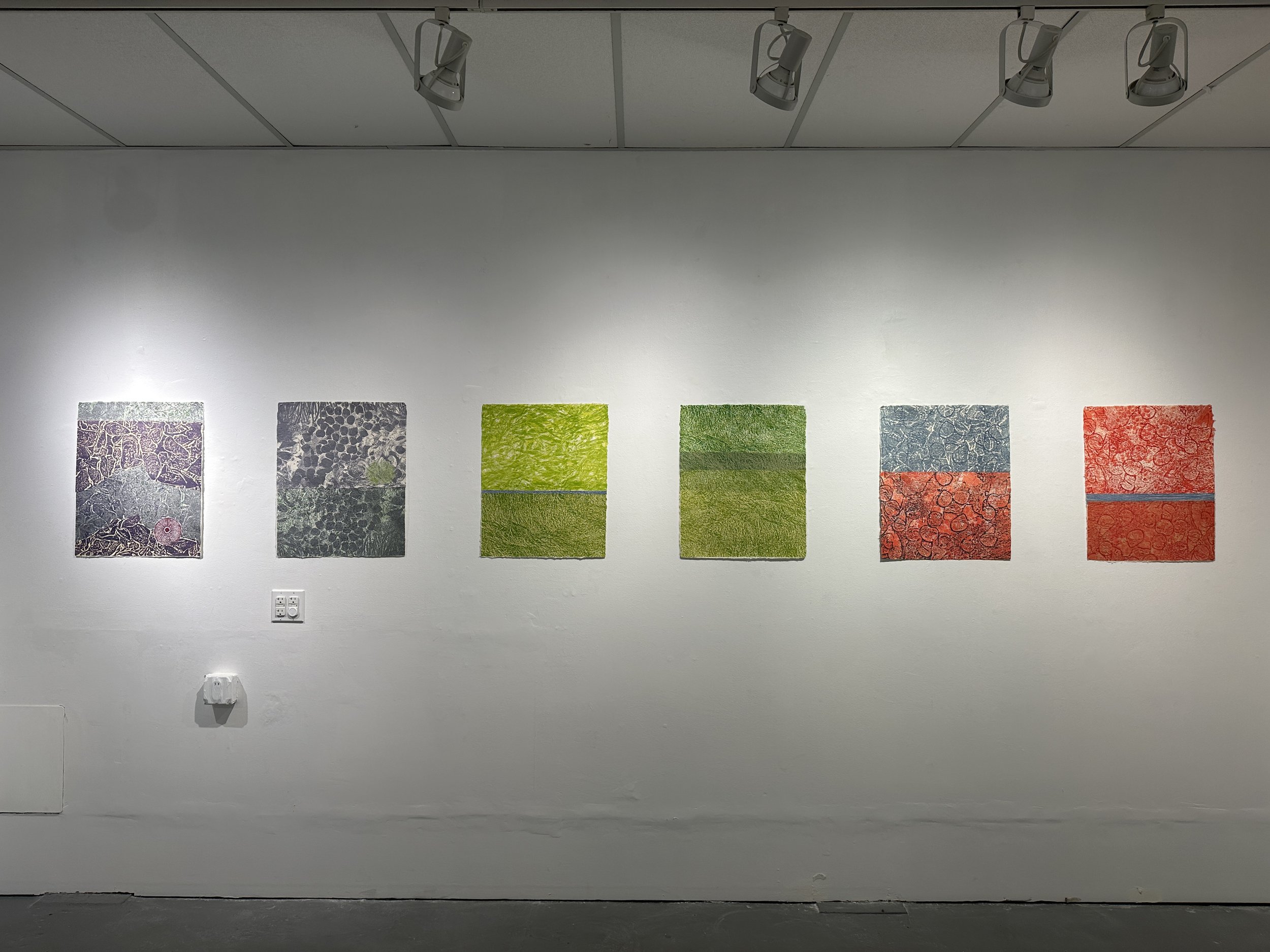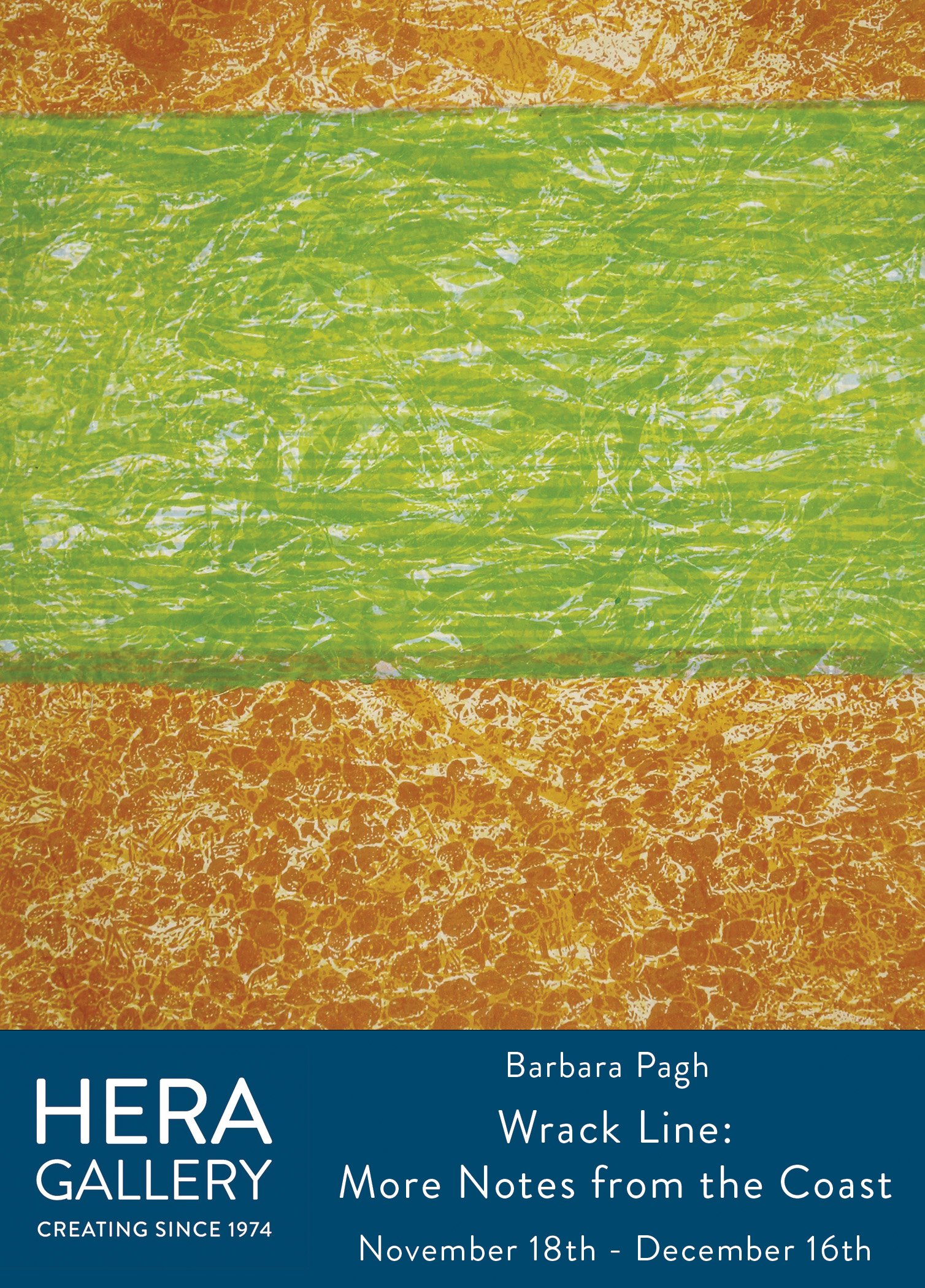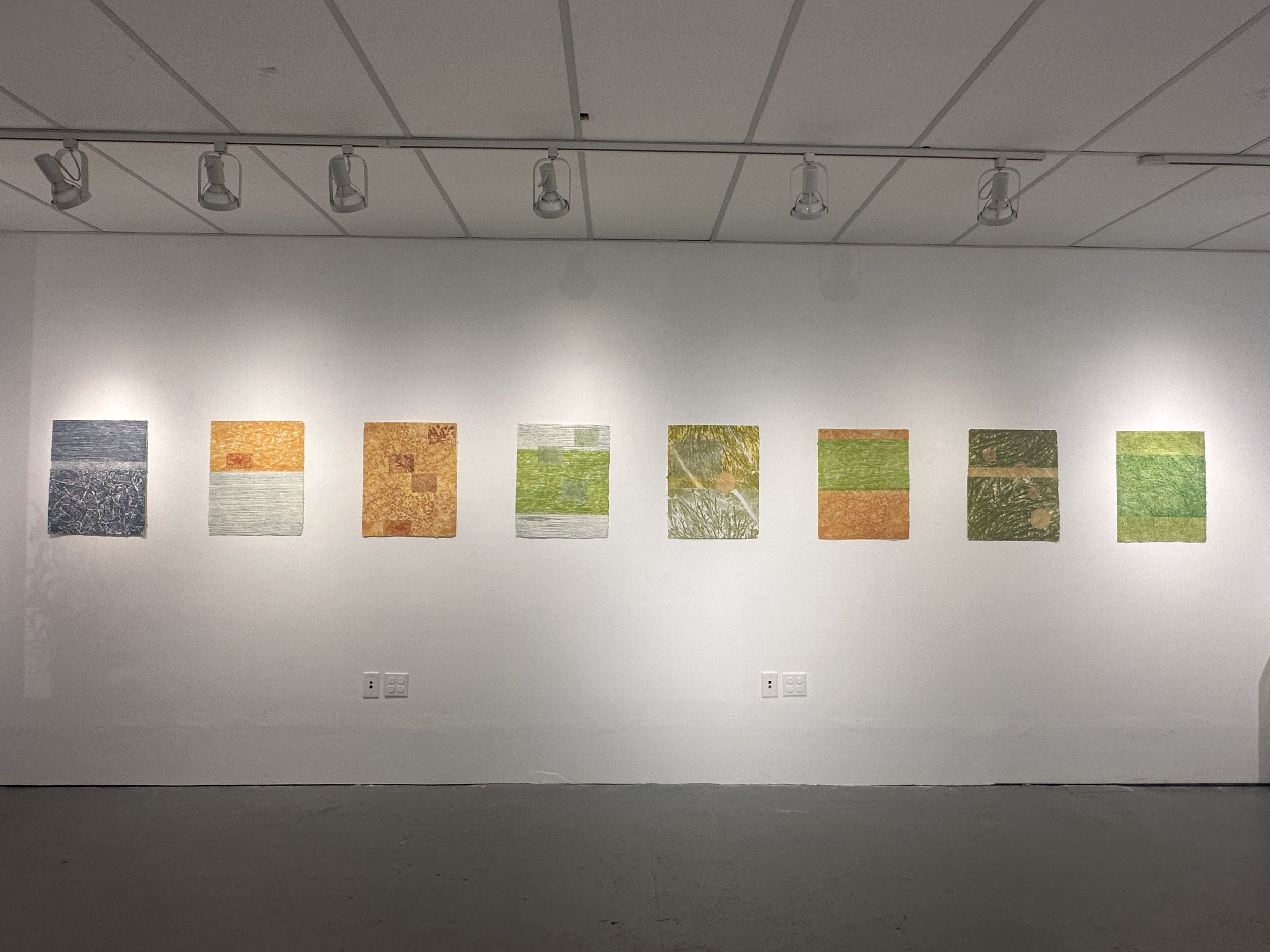Wrack Line: More Notes from the Coast
Hera Gallery is proud to present Wrack Line; More Notes from the Coast, a two person exhibition by Kathie Florsheim and Barbara Pagh. With similar interests about the changing New England coastline, this is the second exhibition for which Florsheim and Pagh have collaborated at Hera Gallery. In 2021, the two artists visited Mount Desert Island in Maine for three weeks, staying in cottages at the Mount Desert Island Biological Lab. The exhibition includes prints and photographs illustrating the story of the coastline.
Pagh exhibits The Convergence Series explaining that “The resulting images require you to look at the landscape in a different way; to look closely and focus on details that might otherwise go unnoticed. This becomes increasingly important in this time of a changing landscape.” Barbara Pagh is a printmaker and papermaker who is a Professor Emeritus of Art at the University of Rhode Island. She has been a member of Hera Gallery since 1985.
Convergence Series, by Barbara Pagh
Convergence Series prints detail a small section of coastline on the west side of Mount Desert Island including Salisbury Cove and the Jordan River. They derive from photographs taken over a three-week period, documenting the changing tides at different times of the day and in various weather conditions and what they reveal. Low tides would reveal mounds of seaweed on the rocks, and beds of mussels, barnacles and periwinkles. There was also the occasional starfish, sea urchin and jellyfish. In the resulting photolithographs I looked for patterns and textures in the landscape and composed two or more images together. There is no attempt to create a realistic representation of place, but a subjective impression based on structure and color and resulting in a layering of texture and form. The resulting images require you to look at the landscape in a different way; to look closely and focus on details that might otherwise go unnoticed. This becomes increasingly important in this time of a changing landscape.
I attended an online talk on the “Landscape of Change” by the Schoodic Institute and while in Maine participated in their collaboration with citizen scientists who record observations of nature. I tried to identify the types of rockweed I was observing and finding out more information. “Ascophyllum nodosum, more commonly called Rockweed, is a species of brown algae or seaweed that is found along the New England coast. It grows on available hard surfaces, including rocks, shells, and dock pilings. As a member of the New England coastal habitat, Ascophyllum nodosum has multiple important roles that impact a variety of other marine species. First, the fronds of the rockweed create a protected canopy for organisms. This sheltered habitat hides smaller organisms from predators and can prevent desiccation of intertidal species when the water recedes at low tide. Less visually obvious is the impact that rockweed has on seawater chemistry. Increasing concentrations of carbon dioxide (CO2) in the atmosphere due to the burning of fossil fuels result in an increase in the uptake of CO2 by the ocean… By regulating these dissolved gases, rockweed helps in maintaining water quality along the coast. Finally, rockweed serves as a source of food along the coast.”
Read More: https://extension.umaine.edu/signs-of-the-seasons/indicator-species/rockweed-fact-sheet/
Kathie Florsheim grew up in the Chicago area, subsequently attending Mt. Holyoke College, where she earned a BA in Modern European History. Two years of study at California College of Arts and Crafts (CCAC) rounded out her undergraduate training in photography. She studied with Aaron Siskind and Harry Callahan at Rhode Island School of Design (RISD) where she earned an M.F.A. in Photography. Honors include a residency at the Atlantic Center for the Arts, a Visual Art Sea Grant award given by the University of Rhode Island, and the Hannum-Warner Travel Fellowship awarded by her alma mater. Her professional honors also include a fellowship with the Institutes for Journalism and Natural Resources, and a CASE Media Fellowship awarded by the University of Maine. Her photographs are in the permanent collections of the Fogg Museum at Harvard University, RISD Art Museum, The Museum of Art at Bates College, the Provincetown Art Association , Houston Museum of Fine Art, Center for Creative Photography in Tucson, AZ, Mead Art Museum at Amherst College and the Newport Art Museum, as well as numerous private collections. She has been a member of Hera since June, 2019. Ms. Florsheim lives and works in Providence, RI.
The photographs in this show are part of a series, called Room 10, that began in 2011 and are ongoing. The images are difficult to capture, often illusive, because I am photographing light- which is continually changing. With a few exceptions, I have been photographing from the same location, a second floor deck that abuts the water and allows me to see and hear tidal movement. The series is named for the place from which I photograph. I use a Pentax 6x7 medium format camera, with color film. My negatives are drum-scanned to translate the images into a digital format and the scans are color corrected when needed, and printed digitally. Occasionally a bird is taken out of an image, but otherwise there is no manipulation of the image. Editing is the most difficult part of the process. Prior to the pandemic, I would lock myself in a room at the East Providence Library, turn on a podcast, or NPR and lay out the most recent images... take a deep breath, and begin sorting the images into various piles-segregating the ones I liked from those that aren’t on key... and hope I was making the right choices. There are often images that I like but that do not fit the larger body of work. I set them aside, and hope that I will remember where I put them for later use. What starts out as a chaotic process, eventually evolves into a show. I have had a running argument with myself for as long as I have been working on this series about how to print the work. Do I want the image to look like I feel about it or what I remember the scene actually looked like? The slightest tweak in the printing changes the image, there are any number of versions of the same piece that are printed...on the way to the recognizing the final print. My partner in this and several other shows, Barbara Pagh, asked me why I photograph from the same location. During one of our recent beach walks, I said I didn’t know...But as I sit in my studio, writing this statement, I do know. It is a sense of place...a much over-used phrase that is true. I have a long and rich relationship with the light in Provincetown. Making these images is about that relationship, and memory -and trying to freeze those many times I have been enthralled, overcome with the way the light and water are always in the process of becoming....
Kathie Florsheim
November 15, 2023
1.20.2020
....leaving off, melting into infinity. Maybe I'll see you there.



































